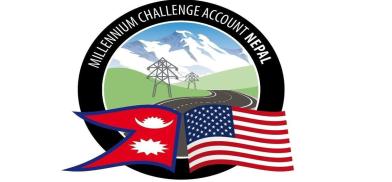Hit by MCC row, time running out for Nepal’s energy-export ambitions
Despite being a net energy surplus country, Nepal still imports electricity from India to supply to some regions which remain off the national grid

In the fiscal year 2020-21 (July to June), Nepal recorded a trade deficit of over $11 billion, of which $5 billion alone was with India. The country doesn’t have much to export, the primary reason why it failed over the years to bridge the gap. Its hydropower sector is the only hope, but that too is now increasingly becoming hopeless.
Once an energy-starved country, Nepal last year became an energy-surplus country in the summer season, with its peak production crossing 2000MW. Much of its surplus power capacity was wasted last year for two reasons.
Firstly, the country doesn't have broad bilateral understandings with India or Bangladesh— the only two viable markets where it could sell excess power; Second, it lacks the transmission infrastructure necessary to transfer power from one region to another.
In 2017, the government signed an agreement Millennium Challenge Corporation-Nepal Compact (MCC), a $500 million grant program by the US government to fund the development of transmission and road infrastructure in the country. It created a lot of hope, especially among private players in the country’s energy market.
Since then, most power projects were completed. However, the high-capacity transmission lines, promised five years ago, are nowhere to be seen. Political parties in Nepal delayed the ratification of the MCC agreement, making it a contentious political issue, and played an extremely detrimental role in the growth of the energy sector.
Nepal’s transmission lines either do not have the capacity or have aged to the point of collapse, according to a report in The Kathmandu Post. The infrastructures are needed, almost immediately, not only for improving supply within the country but also to export power to India and beyond, it added.
Despite being a net energy surplus country, Nepal still imports electricity from India to supply to some regions which remain off the national grid.
“We have estimated that the peak hour demands in monsoon, starting June, is expected to reach 1,700 MW,” Suresh Bahadur Bhattarai, spokesperson for the Nepal Electricity Authority, was quoted as saying by The Kathmandu Post.
And, the total installed capacity is likely to cross 2300MW.
Under the MCC compact, a-315km double circuit 400kV transmission line was planned to be constructed. If completed, it will provide a vital missing link for power projects of different river basins to the existing high-voltage grid in Nepal.
Much to the dismay of the country's energy players, many within the ruling coalition of five parties remain against ratifying the MCC agreement, with the biggest party, the CPN-MC, even threatening to quit the government if the MCC agreement was placed in parliament. They say it compromises the country’s sovereignty.
Since 2017, the successive governments in Nepal failed miserably to counter what seemed an organized and controlled disinformation campaign against the MCC, which many say is inspired by China. It eventually hurt the energy sector, one of its most important economic segments.
Many experts are warning that time is fast running out for Nepal to realize its energy potential. The market won’t wait, more so when the costly hydropower projects are facing tough competition from cheaper renewable energy sources like solar.
India, a huge market where Nepal hopes to export power, is increasingly multiplying its power through solar and wind energy. In the last seven years, its solar grew by 14 times. In FY 21, India’s total solar energy installed capacity reached 40GW, overtaking wind energy installed capacity of 37 GW. Nepal should be more worried because the per-unit cost of solar energy has come down significantly—lesser than hydropower—with new technological breakthroughs.









Post a Comment